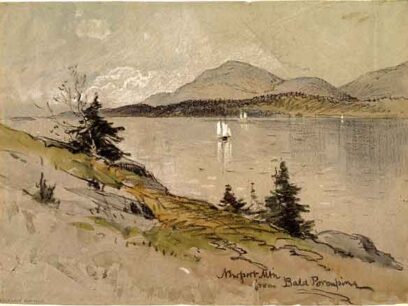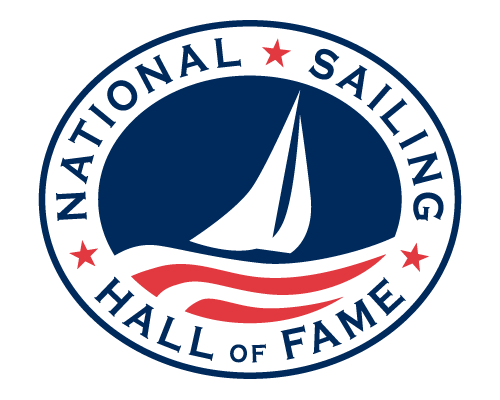May 2, 2010
Newport Mountain from Bald Porcupine

George Henry Smillie
John Davis Hatch Collection 1984.7.112
Water-side views are common in Smillie’s work. He frequently depicted quiet, peaceful moments at the beach or riverside, employing a more neutral palette and looser brushwork than many of his American contemporaries. In Newport Mountain from Bald Porcupine, the loose brushwork can be seen most in the colorful details of the trees and grass and in the far distance among the clouds. The small sailing vessel reminds the viewer of the importance of this form of transportation throughout the nineteenth century. Unlike some of his colleagues, Smillie preferred to use a combination of watercolors and oils in his works. Although he traveled throughout the United States, Smillie preferred to portray scenes from the east coast; Newport Mountain from Bald Porcupine is on the coast of Maine, north of his New York City home.
Artist Bio
George Henry Smillie was born in New York to James Smillie, a well known engraver in New York City in the 1840s. George Smillie’s artistic career accelerated before the Civil War and ended shortly after the First World War.
After study with James McDougal Hart, a landscape painter of the period, Smillie was associated with the style of the Hudson River School. Later, Smillie’s style evolved and he became more loose and fluid in his technique, often being compared to American Impressionists. Smillie spent most of his professional life in New York City, with frequent trips along the east coast and as far west as the Rocky Mountains and Yosemite Valley. Although the west would not be Smillie’s greatest source of inspiration and success in his art, he did sketch many of the sights he saw and later used the material to create mountain landscapes and portrayals of the native Indians. He was most famous for his scenes of farms and the shore of the east coast. Smillie died in New York in 1921.
http://www.fineoldart.com/browse_by_essay.html?essay=452
[This is an excerpt from the interactive companion program to the videodisc American Art from the National Gallery of Art. Produced by the Department of Education Resources, this teaching resource is one of the Gallery's free-loan educational programs.]
Preserving America’s Sailing Legacy
Engaging Sailing’s Next Generation
Stay Connected to the National Sailing Hall of Fame
